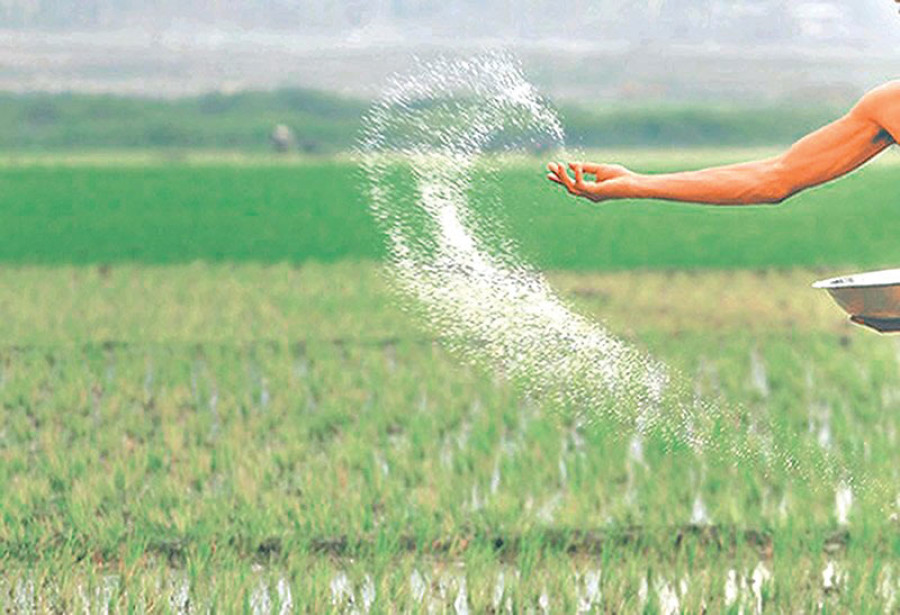Opinion
Young country, fallow lands
As youths migrate and arable land lay fallow, question remains: who is going to farm?
Bhawana Upadhyay
Youth are increasingly considered as one of the key stakeholders of social and economic development policy and practices by international agencies including the UN. The fact that many international and national climate negotiations have started inviting youth and nominating them as campaigners for change serves as a testatement to this. Scientists and sociologists around the globe have been pitching for making agricultural system more lucrative to youth through the support of digital technology, climate smart practices and innovations. Young people bring energy, vitality and innovation and are crucial for finding out of the box solutions. Hence, there are various reasons why their engagement in agriculture should be encouraged.
One of the primary reasons is the changing demographics in the agriculture sector. Today, six out of ten rural people around the world are young people, accounting to 60 percent of global rural population. And that number is growing. Migration—rural outmigration in particular, is the second key reason for arable lands turning barren.
Migration of youth (especially men) in large numbers has been one of the primary reasons of increasing fallow land and labor shortage in the rural areas of countries like Nepal. Experts contend if this problem remains for long it will have a serious implication on our food system. The third reason is the reduction in intergenerational transfer of agro-ecological and other conventional skills oeing to the absence of young people in rural families for the uptake.
Where do we stand?
According to the Ministry of Agricultural Development (MoAD), nearly 30 percent of the cultivated land in the country is fallow and this data is only soaring up. However, according to locals, it occurs that the problem of fallow land in hills and mountains is much bigger than the government estimation. Further, one of the recent estimates claims that of the total 75 districts, 27 mountain districts are already have a negative population growth since the past decade. Demographers warn that if the trend of outmigration of youth persists according to the current pattern, the hills and mountains will be nearly empty by 2050.
Another trend that has been noticed particularly in uplands is that as soon as men migrate abroad, their wives and children move to nearby towns for better healthcare facilities and children’s education thereby abandoning their arable farmlands. It’s painfully obvious that wives and children of migrated families are overburdened and find difficultly to keep up with their farm activities. The problem gets worse with prolonged drought and absence of proper irrigation facilities in the country.
According to a World Bank report, Nepal’s arable land per capita is the lowest in the world. With a gradual reduction in farming activities, arable land has decreased by more than 50 percent from 0.19 ha in 1960 to 0.09 ha in 2010. This decline has put our overall food production on the wane. As a result, we are now a food deficit country.
Our farming system can be characterised as subsistence with predominantly small landholdings. It is a mixed crop and livestock production system, supported by basic technology. Decline in the food production not just affects the income from agriculture, but also the household food security and nutrition.
Time for action
Nepal government has made some efforts to address this problem. For instance, pro-youth policies like the National Youth Policy 2010 has been endorsed. However, its implementation has been a challenge due to limited budget and absence of action plan and regulations. Since the policy is first of its kind in Nepal, a need for appropriate circulation and dissemination at provincial and local levels is critical to raise awareness.
Youth population in Nepal accounts for 40.3 percent —45.8 percent male and 54.2 percent female of total population, If the government and other relevant investors including the private sector fail to channel energy and resources in engaging these young people in agriculture and other viable sectors, not only will the youth outmigration continue but also the rural farmlands will continually remain fallow.
Though migration has emerged as one of the alternative livelihood options, majority of our rural people’s livelihood is still reliant on agriculture. If there is no call for action to stop this trend, what will happen to our farmlands? Will they remain fallow forever?
Upadhyay writes on natural resource management and sustainable development issues




 6.12°C Kathmandu
6.12°C Kathmandu










